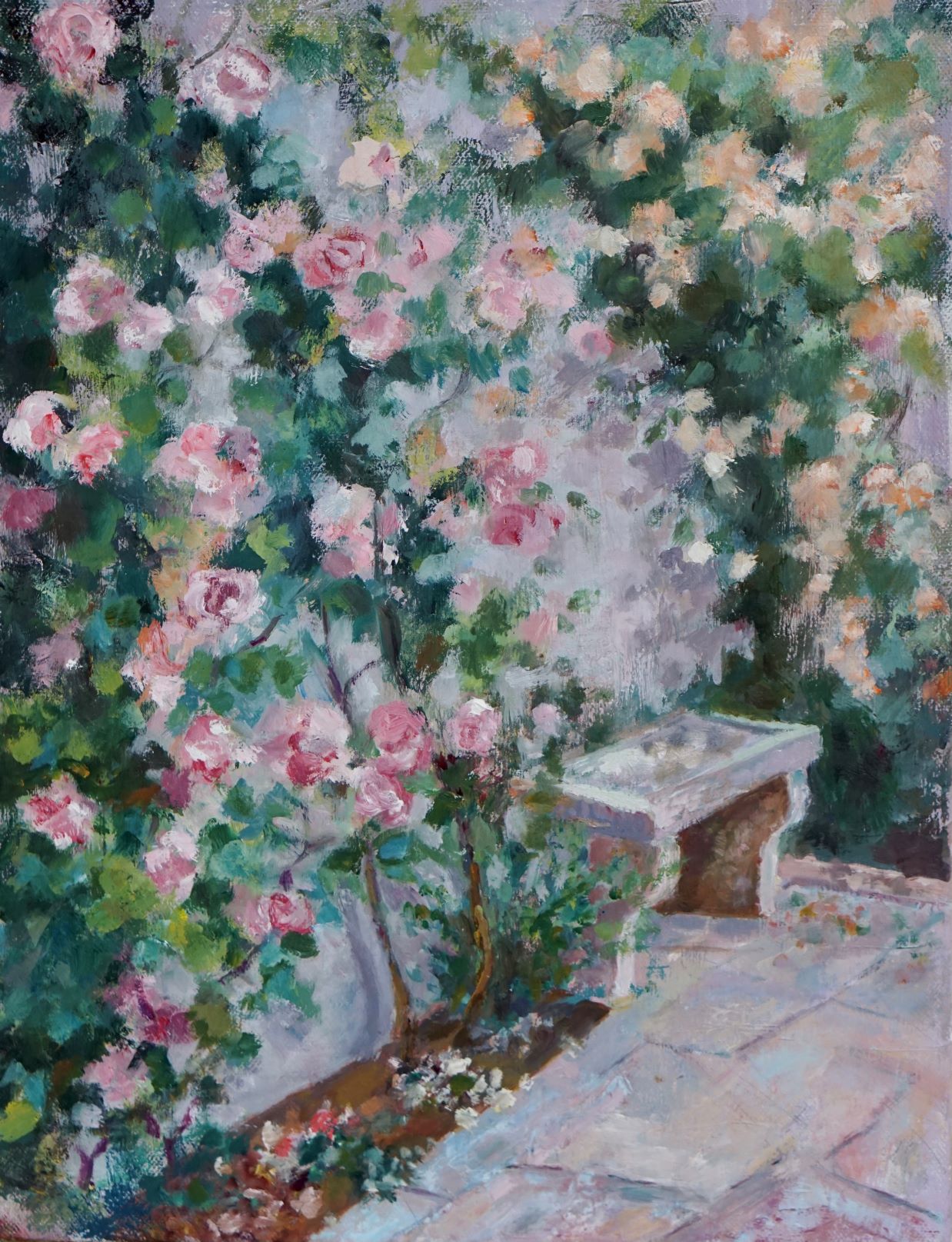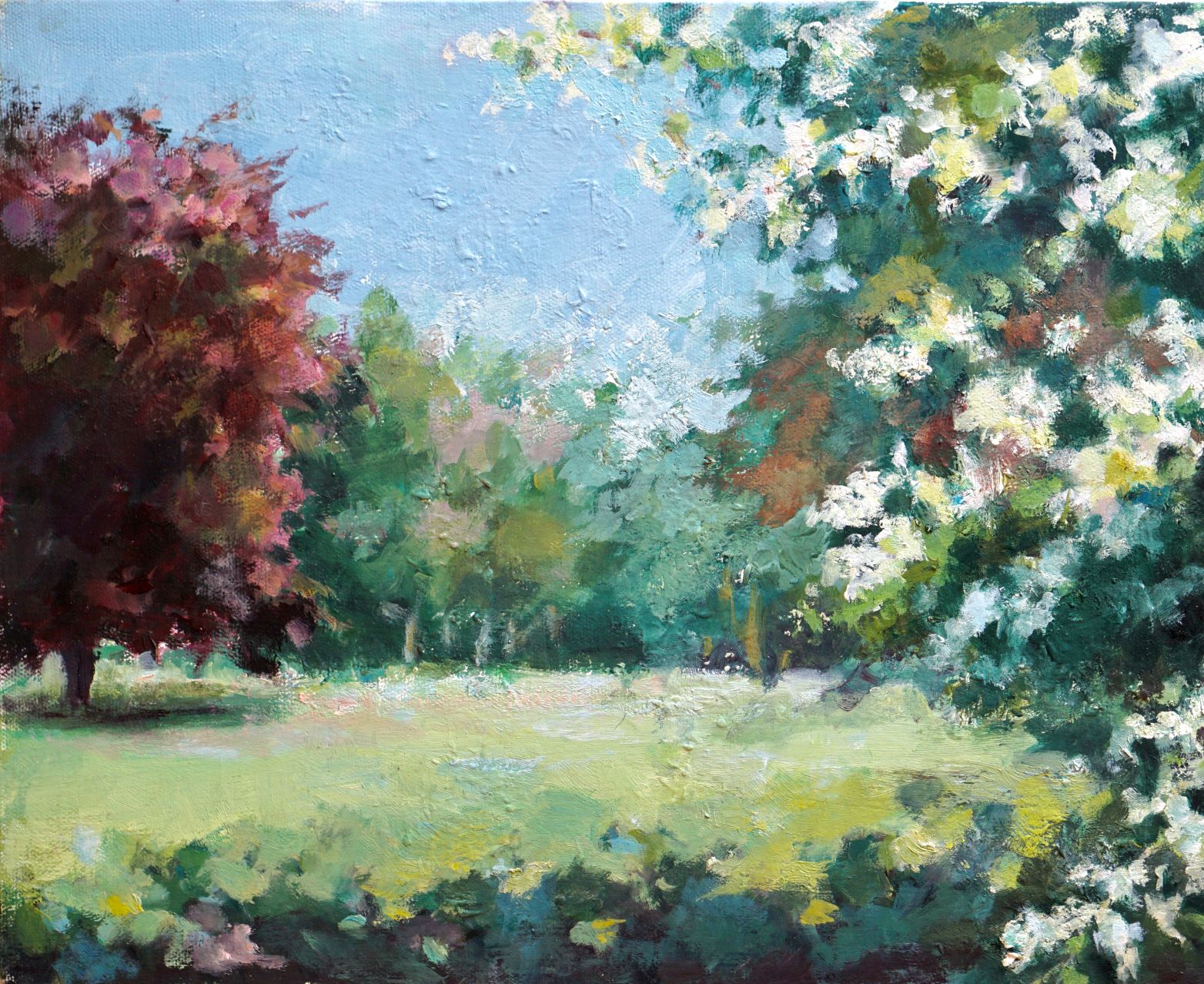The great 19th century composer Tchaikovsky once said, ‘inspiration is a guest that seldom visits the lazy’. In other words, you won’t find exciting subjects to paint while you’re watching TV, you need to be proactive in your quest.
It can take years of painting to find a subject that you love. Often you are not painting what you want, but what is popular at the time and therefore it can be difficult to distinguish what it is that draws you to a subject. Perhaps your choice of work is based on factors such as ‘what sells’ or what you feel confident that you can achieve within your skillset? However, finding subjects which actually inspire you can improve your confidence and therefore your skills.
Ask yourself why you have a strong connection to your chosen subject. Think about subjects that make you feel happy whilst you’re painting, or what inspires you when you go to an exhibition and see other paintings. You may not be attracted to a particular painting but simply drawn to colour, design, pattern or maybe you have a passion for a particular material. If you feel excited and inspired by something then you are more likely to stay committed and produce a quality painting.
Don’t feel that you have to rush into painting, spend time just observing; it is valuable to spend time just thinking through your ideas.

Rose Garden, oil on canvas, (40x30cm)
Roses always inspire me. I have used soft pastel colours for this painting to convey the romance of the scene.
Getting Started
You are aiming to combine technique, planning and passion when starting your painting.
Start by blocking in your light, dark and medium tone shapes; mid tone will most likely be the more dominant.
Some artists like to sketch with different tones of burnt sienna, which can also be used as an effective under paint. It's especially good when painting rocks or certain landscapes (see below) as you can let this under colour show through. Even though it may not be the colour you intend for the painting, at this early stage you are really only putting in your tonal values and basic shapes, and even specks of it showing through grass in the foreground can look really good, especially as orange and green complement each other.

Local Park, oil on canvas, (30 x 36cm).
Beech trees are always lovely to paint as red adds a beautiful richness, complimenting the surrounding greenery. I have also included some crimson in the foreground shadow to bring the painting together.
Composition and Subject
Once you have established your composition, it’s good to start working on your focal point. Everyone has a different technique to create their own vision, however your focal point will always look better away from the centre. Once the main feature of the painting has been established you will start to build up your confidence.
Having positioned your subject in the right place, you can then start building around it.
The supporting elements in your painting are just as important as they are what will lead the viewer to the focal point. A good composition will tell a story, taking the viewer all around the painting. Ideally you want the viewer to be able to discover something different whenever they enter the painting.
What catches your attention?
Some people really love a totally unruly natural landscape. Personally, I prefer a garden or park that has been designed by man. We all have a different eye for beauty and what catches your attention may also catch the eye of the viewer too.
It’s important to convey an atmosphere to the viewer by presenting the scene as best you can by enhancing what you see. Increased saturation, contrast and brightness or perhaps adding or removing objects as you feel necessary can all help to achieve this.
Often you feel you have reached the end of your journey and you stand back proudly admiring your work, only to find the next day that only your faults seem to be staring back at you. Don’t let this discourage you; it’s normal to discover problems that you may have not recognised before. It is a sign of development as you are becoming more in tune with your work.

Yellow Roses, oil on canvas, (50x40cm)
When your painting is all about colour and contrast, separate your brushes and keep your colours far apart on your pallette to keep the colours fresh.
My painting Yellow Roses, above, was inspired by the striking shape and contrast in the mix of orange and yellow flowers. I chose to enhance these colours by using complimentary colours from the colour wheel. This is demonstrated by the purple background complimenting the yellow roses whilst the orange base compliments the greens. This technique also creates a lively composition whilst allowing the viewer to travel round the painting evenly without distracting from the subject.
For this painting I used Winsor & Newton cadmium orange with a touch of Winsor & Newton viridian green for the base, adding white to soften the colour to muted terracotta. For the purple background, I mixed Winsor & Newton ultramarine with crimson and a little white.
Bringing Your Painting Together
You need to be wary of visually separating a painting in ‘two halves’ - when different sections of your painting look finished but don’t work well in harmony.
To avoid this, you could pull some of the colours into each other as colour as light reflects and bounces off other objects. For example, in Yellow Roses I have brushed some of the oranges into the purple in order to unify and bring the painting together.
This can also be seen in my gouache work, The Tulip Field, see below, where I have sporadically placed purple tulips amongst the red in foreground.
To achieve the vibrant red in these tulips I used Schmincke Horadam cadmium red with a touch of white and Winsor & Newton cadmium yellow for the orange tulips.

Red Tulip Field, gouache on canvas, (40x30cm)
I have blocked in my basic shapes and tonal values, keeping in mind that the mid-tone will be the dominant tone.
A commonly used method amongst impressionistic painters is to echo the colours of the sky into the rest of the landscape. When painting scenery, you could put touches of the sky colour into the grass and leaves as I have done in my gouache painting The Magnolia Tree.

Magnolia Tree, gouache on canvas, (60 x 45cm).
I used different shaped brushes to show the textures of rough autumn leaves against the fresh fallen petals.
Although accomplishing a painting that contains a sense of rhythm and works well as a whole is quite challenging, sometimes it can come together with one simple brushstroke mark.
Painting in different styles
I often find influence in visiting exhibitions, however, given our current situation, social media has been a great tool for discovering new artists. Platforms such as Facebook, Instagram and Pinterest show a variety of artists and styles that can relate to your interests.
An idea for developing your skills is to set up a still life and paint it in different styles that have inspired you. This will help to loosen your own work and improve your observational skills. For the perfectionists, such as myself, I find that setting a time limit will stop you from worrying too much about mistakes and overly stressing about making it perfect.
Another enjoyable thing to do is paint with friends. It is always interesting to see how other artists interpret the same subject. Given the current circumstances I have been scheduling weekly zoom calls with artist friends which can be just as gratifying when you aren’t able to meet in person.
Read more on painting gardens in gouache with Lorna.













Comments
Login or register to add a comment
No comments